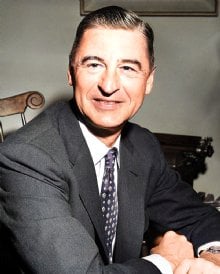Overview
Dr. Seuss's 1948 tale follows Thidwick, a moose with a generous spirit who lives by a personal code of hospitality. Set along the shores of Lake Winna-Bango, the story starts as a simple act of kindness and spirals into a comic parable about generosity without boundaries. Seuss blends zippy verse with escalating visual gags to show how a good deed can be stretched, strained, and ultimately abused, forcing Thidwick to discover the difference between being kind and being a doormat.
Plot
On a pleasant day by the lake, a small bug asks Thidwick for a ride on his antlers. Polite and proud of being a good host, Thidwick agrees. The bug, emboldened, invites others. A bird builds a nest, a spider spins a web, a woodpecker drills a hole, and soon an entire menagerie piles on. Each newcomer claims to be a guest of a guest, and Thidwick, clinging to his creed of hospitality, accepts every arrival, even as his antlers grow crowded and heavy.
The burden separates him from his herd. When the moose decide to swim across the lake to better feeding grounds, Thidwick’s passengers vote to stay put and declare his antlers "public property", outvoting the moose whose head they occupy. Winter creeps in, food grows scarce, and Thidwick, slowed and starved, trudges under the weight of freeloaders who bristle at any suggestion he move or reclaim his space. The farce turns perilous when hunters spot him. They see not a beleaguered host but a trophy with an exotic, ready-made display, and give chase.
Driven to the edge of the lake with cliffs and snow behind him, Thidwick faces capture. At that crisis point, nature offers an answer his politeness never could: moose shed their antlers. Thidwick lets his antlers, and every squatter clinging to them, drop to the ground. Light and free, he slips into the lake, swims to join his herd on the opposite shore, and later grows a fresh set of antlers. The abandoned antlers, still crowded with indignant “guests,” end up mounted by the hunters as a museum piece, a comic tableau of entitlement frozen in time.
Themes
Thidwick’s story pivots on hospitality, consent, and boundaries. His instinct to be nice is admirable, but without limits it invites exploitation. Seuss satirizes majority rule unmoored from fairness when the passengers vote to control what is not theirs, and he exposes how language, calling a takeover “guest rights”, can mask selfishness. The shedding of the antlers reframes kindness as a choice, not an obligation. Thidwick remains big-hearted, but he learns that self-respect and the courage to say no are part of being truly good. Renewal threads through the ending: he loses something, escapes danger, and grows anew.
Style and Impact
Written in Seuss’s buoyant anapestic rhyme, the tale rockets forward with rhythmic repetition that mirrors the piling-on of guests and the pressure Thidwick feels to accommodate everyone. The illustrations escalate the joke visually, cramming the antlers with ever more creatures and clutter while the landscape widens into icy chase scenes. Beneath the slapstick runs a sharp moral with real-world resonance for children and adults: generosity shines brightest when paired with clear boundaries. Thidwick endures as a memorable figure of grace under strain, a moose whose heart stays big even as he learns to carry it on his own terms.
Thidwick the Big-Hearted Moose
Thidwick the moose allows a small creature to ride on his antlers; over time more animals take advantage, burdening Thidwick until he realizes he must reclaim himself. The tale examines hospitality, boundaries, and exploitation with Seuss's characteristic wit.
Author: Dr. Seuss
 Explore the life, works, and legacy of Dr Seuss, the beloved author who transformed children's literature with his imaginative stories.
Explore the life, works, and legacy of Dr Seuss, the beloved author who transformed children's literature with his imaginative stories.
More about Dr. Seuss
 Explore the life, works, and legacy of Dr Seuss, the beloved author who transformed children's literature with his imaginative stories.
Explore the life, works, and legacy of Dr Seuss, the beloved author who transformed children's literature with his imaginative stories.